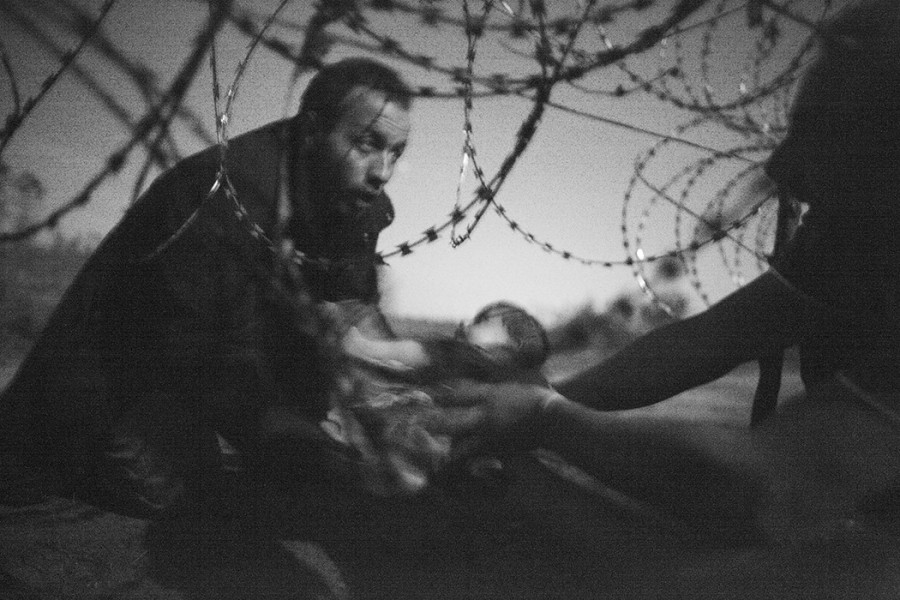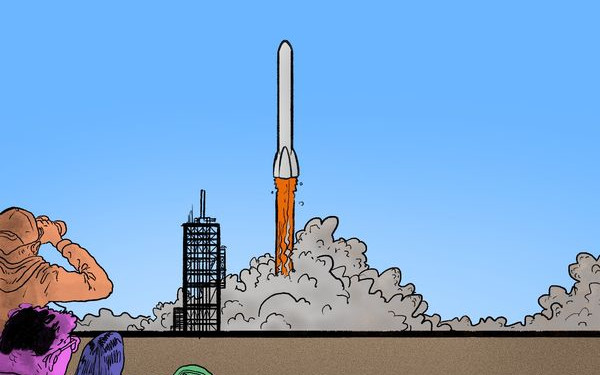Zooming into World Issues
First Prize for World Press Photo Competition Focuses on Refugee Crisis, Exhibited in Montreal
On the border of Serbia and Hungary one August night last year, a Syrian man passed a baby underneath a barbed wire fence as they journeyed to find refuge in Europe.
This was the moment that Australian photographer Warren Richardson captured, which would later win photo of the year by the World Press Photo organization.
Richardson documented a group of Syrian refugees as they migrated to Austria in hopes of finding safety, shelter, and a chance to restart.
The Syrian migrant crisis and refugees across Europe were widely represented subjects in this year’s World Press Photo contest. The first and second photojournalism prizes at the annual exhibition also depicted the Syrian conflict and the lives of refugees.
This is the eleventh year the international exhibit is being displayed in Montreal, at the Marché Bonsecours in the Old Port.
Richardson’s winning photograph titled, “Hope for a New Life,” was chosen not only for its powerful content, but also for its aesthetic, informational and emotional composition, according to Matthieu Rytz, a member of the contest’s jury. “We found that this picture was very unique,” he said.
Taken at night and without flash so that border guards wouldn’t be alerted, members of the jury called Richardson’s technique “flawless.”
“He did exactly what he was supposed to do,” Rytz explained. “Technique is being able to adapt to circumstances.”
Founded in 1955 and based in Amsterdam, World Press Photo has the goal to help develop and promote the visual aspect of journalism. Their core values are based on freedom of expression, information and investigation. This is reflected in their annual photojournalism competition through a rigorous verification process of the photos and strict editing rules.
There are three winners for each category, which range from general news to sports or nature. Most of the photos share a definitively human aspect and are honest representations of what’s happening in the world today.
“The images of this exposition are the windows to the world,” said Rytz. All of the major news events from the past year are represented—from Daniel Berehulak’s coverage of the earthquake that struck Nepal on April 29, 2015 to Corentin Fohlen’s images of French protesters reacting to recent terror attacks.
Majority of these images have already been published in major news outlets such as The New York Times and National Geographic.
Photography Come to Life
In a photograph found on the second floor exhibition, two women stand in a doorway. One is a blonde Montrealer of Finnish origins while the other is a Syrian woman wearing a hijab.
Despite differences of culture and race, these women display a common lived experience in their stares—they both have children with special needs. The two families were paired together in Montreal because of this.
Elsewhere in the upstairs gallery, George, a 17-year-old from Syria, tries to decipher the French text beside a photo of him and a member of his Montreal host family.
These photos, taken by Guillaume Simoneau, were part of the “Je ne viens pas de l’espace” exhibition. Simoneau worked with Anaïs Barbeau-Lavalette, this year’s spokesperson for World Press Photo in Montreal, to take portraits of Syrian families that have recently moved to Montreal.
“It’s a metaphor for rebirth,” Simoneau said. He explained that the exhibition was a physical space where people come to reflect on what could come next—the hopes and possibilities that can occur after the bleak realities Richardson and others have exhibited on the first floor.
“The Syrian conflict is still ongoing and it is also very much connected to Montreal” Simoneau stated.
World Press Photo Montreal // Aug. 31 to Oct. 2 // Open from 10 a.m. // 325 Commune St. E. // $10 for students

_900_601_90.jpg)


_600_832_s.png)

_600_375_90_s_c1.JPG)

1_600_375_90_s_c1.jpg)
1_600_375_90_s_c1.jpg)